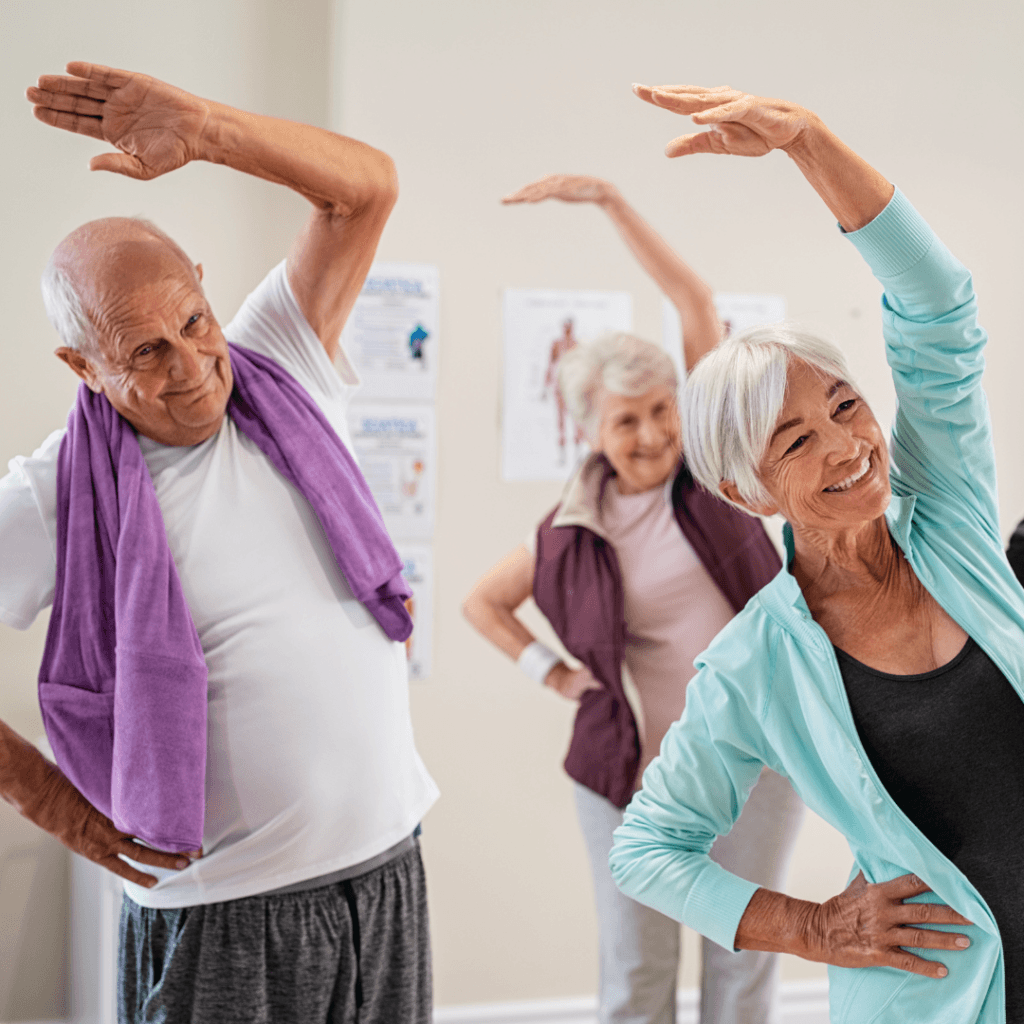

6 Exercise Tips for Move More Month
by Amelia Garrison
Being active is a great way to maintain our physical and mental health, but did you know that exercise can also improve neurodegenerative diseases and promote overall brain health? Discover tips for incorporating physical activity into your daily routine with experts from Pacific Neuroscience Institute (PNI) for Move More Month in April.
Each April, the American Heart Association promotes Move More Month, a time to encourage healthy habits by incorporating regular exercise into your daily routine. With 1 in 3 American adults over the age of 50 getting no physical activity outside of work, it is important to get up and move more throughout the day to improve your quality of life.
Studies show that regular exercise can help to decrease cortisol levels, which in turn promotes overall good health, improves sleep, and reduces stress levels. Heightened levels of cortisol, or the “stress hormone,” can increase blood pressure and high cholesterol, increasing the risk for atherosclerosis, heart attack, and stroke.
How can I get motivated to exercise?

Taking the time to invest in your physical health today is one of the first steps to keeping you healthy, but finding the time to incorporate exercise into your daily routine may be the first challenge. Studies show that group exercise can be much more motivating than exercising alone. Karen Miller, PhD, Senior Director, Brain Wellness and Lifestyle Program, recommends starting your exercise routine with a friend, family member, or social group to boost motivation.
“To increase motivation and overall benefit from movement, plan a walk or a hike with a friend. Aim to schedule this once or twice a week on a regular basis. The combination of socializing and exercise helps us to enjoy the moment and increases the chance that we will reach our exercise goals,” Miller commented.
Can I exercise with Parkinson’s disease?
If you or your loved one is living with Parkinson’s disease, incorporating physical activity into your daily routine may seem frustrating or near impossible. However, exercise can improve your Parkinson’s symptoms and even prevent further decline, explained Melita Petrossian, MD, Director of the Movement Disorders Center at PNI.
“Exercise is like a drug for Parkinson’s disease. It helps people’s brains use dopamine more efficiently, it creates new synapses or connections between brain cells, and it releases a protein called BDNF that helps protect the brain cells from further decline. Most of my patients who start exercising notice a significant benefit from exercise within a few weeks or a couple of months,” Dr. Petrossian explained.
What type of exercise is best for Parkinson’s disease?

When it comes to understanding the various types of exercise for Parkinson’s disease, there are many different options that you can try, explained Dr. Petrossian. Try finding an exercise that you enjoy, and slowly incorporating it into your routine.
“Types of exercise that can be helpful include cardiovascular exercise; strength training including focusing on the upper body, lower body, and core; stretching; balance training; and skill-based exercise, which is when patients are learning something new such as dance, boxing, yoga, and or pilates. However, always make sure to ask your doctor before starting an exercise regimen,” Dr. Petrossian said.
Can I exercise with Multiple Sclerosis?
Regular exercise is one of the best habits to incorporate into your daily routine if you or a loved one is living with Multiple Sclerosis, explained Barbara Giesser, MD, an internationally recognized clinician specializing in the care of persons with MS at PNI.
“Engaging in regular exercise and physical activity is one of the best ways people with MS (and all of us) can ensure that we are feeling and functioning at our best. In persons with MS, exercise and physical activity have been shown to improve some symptoms, improve function, and may have the potential for neuroprotection and neural repair,” Dr. Giesser commented.
What type of exercise is best for Multiple Sclerosis?

For both ambulatory and non-ambulatory persons with MS, weekly regular exercise is best, explained Dr. Giesser.
“A general recommendation for is to try to attain at least 150 minutes/per week of exercise or physical activity,” explained Dr. Giesser. “This can include walking, other ambulatory activities, and everyday activities, such as housekeeping, dancing, playing outdoor games, etc. Persons who are non-ambulatory can do seated exercises, wheelchair “laps”, arm cycling, or other non-ambulatory activities.”
Exercise and brain health
We know now the great benefit of exercise and its direct relationship to brain health. Recent studies show that exercise can positively impact cognitive and motor function, helping to boost how well we may think, remember, learn, and even control movement, explained Ryan Glatt, MS, CPT, NBC-HWC, Brain Health Coach and Director of the PNI’s FitBrain℠ Program.
What type of exercise is best for brain health?
Although any one exercise may prove to be beneficial for brain health, research shows that incorporating a variety of exercises into your daily routine is best.
“Exercise has been found to be beneficial for the brain, and a combination of aerobic, resistance, and skill-based exercise yields the greatest variety of exercise’s brain health benefits,” explained Glatt.
Related Articles
About the Author

Amelia Garrison
Amelia Garrison is the Marketing Specialist at Pacific Neuroscience Institute (PNI). Well versed in community outreach strategy and implementation, she leads the PNI blog, newsletter, and digital communications. Amelia oversees PNI's reputation management and community sponsorships.
Last updated: November 6th, 2024


